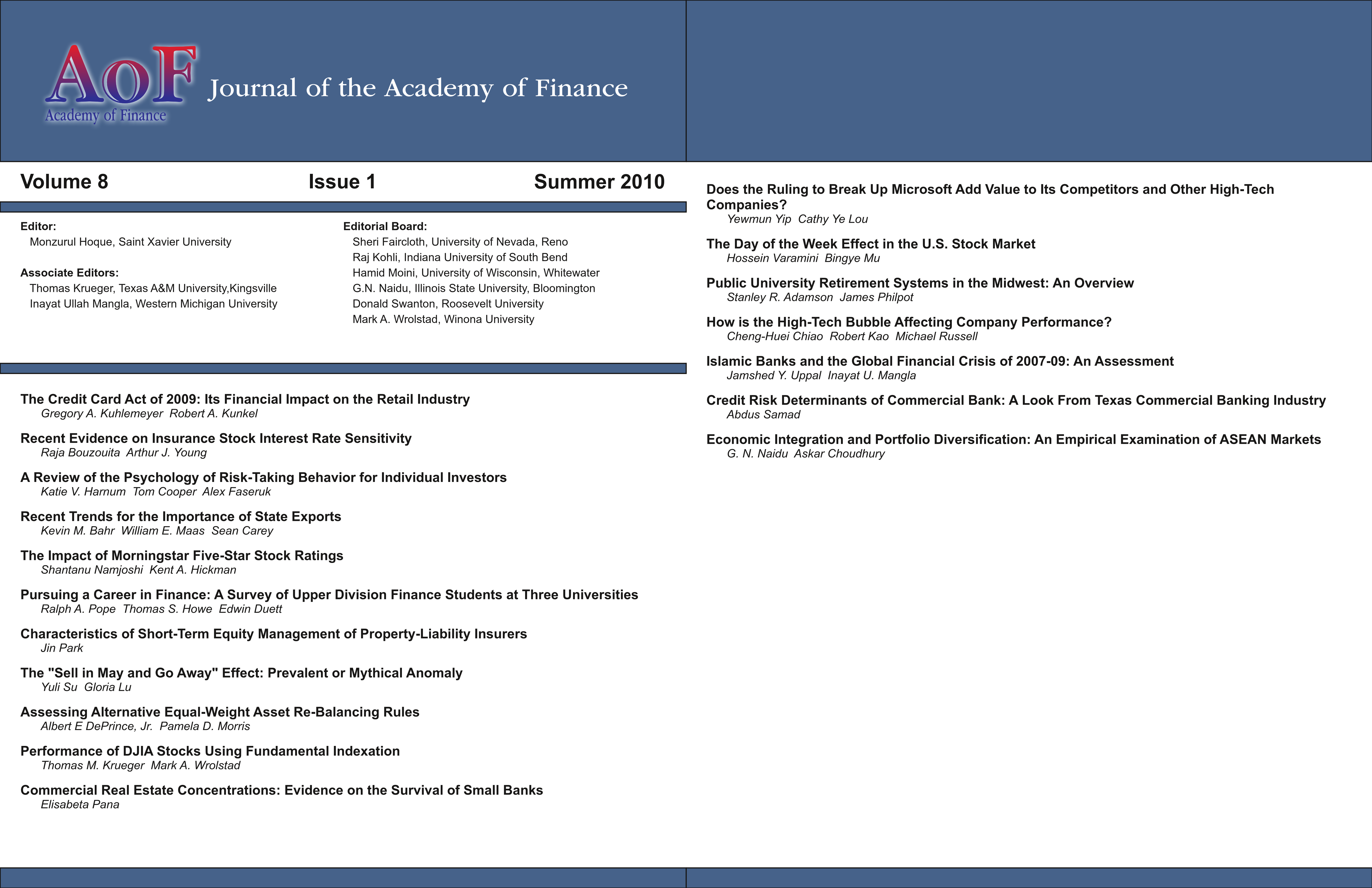Assessing Alternative Equal-Weight Asset Re-Balancing Rules
DOI:
https://doi.org/10.58886/jfi.v8i1.2357Abstract
This paper evaluates a hypothetical portfolio based on an equal-weight investment rule involving four asset classes: domestics, industrialized countries excluding the U.S., emerging market countries, and global bonds. Portfolio results using three alternative re-balancing rules are compared with a composite benchmark index. The simulation period runs from July 1996 through January 2010, which is dictated by the availability of data on the underlying asset classes. The equal-weight investment strategy is superior to investing the composite benchmark index in all three rules examined. The first involves no rebalancing over the simulation period. This provides the best performance versus the composite benchmark. The second rule collects and rebalances dividends according to the equal-weight investment rule. The third collects both dividends and capital gains and reallocates them among the four asset classes using the same equal-weight investment rule. Of these rules, there is a slight surrendering of return as one moves to more complex rebalancing rules. Additionally, the variability of portfolio return increases marginally as one moves from the baseline rule through the two rebalancing rules. Thus, a good case could be made to following a fixed investment rule and allowing the market to rebalance the portfolio.





